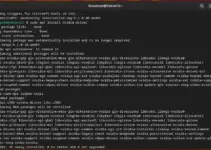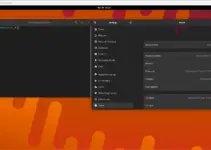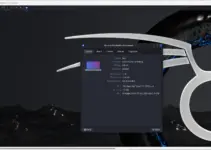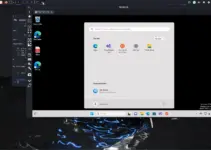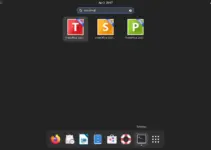ClickHouse is an open-source columnar database management system that allows for real-time data analysis and uses SQL queries. Installing it on Debian can enhance your data processing capabilities. It is developed by Yandex, a popular technology company for online analytical processing (OLAP).
This DBMS is used to generate analytic reports in real-time for non-aggregated data and can generate reports from petabytes of raw data without any significant latency.
Prerequisites
- Debian server or desktop
- User with sudo privileges.
- Basic knowledge of Linux terminal.
- Internet Connection
Step 1: Update Debian Packages
Open your Debian 11 or 12 terminal screen and then run the system update command given below to update the package list.
sudo apt updateHowever, if you want, can upgrade the packages by running :
sudo apt upgradeStep 2: Import the GPG key
Well, the ClickHouse is already available through the default repository of both Debian 12 and 11 but the version we get to install will be the older one. Therefore, we add the official repository of ClickHouse manually but before that let’s add the GPG key used to sign the packages of ClickHouse by its developers. We need it because then only our system could verify the packages we are getting, are from the source as they were released by its developers and have not been modified by anyone in between.
GNUPGHOME=$(mktemp -d)sudo GNUPGHOME="$GNUPGHOME" gpg --no-default-keyring --keyring /usr/share/keyrings/clickhouse-keyring.gpg --keyserver hkp://keyserver.ubuntu.com:80 --recv-keys 8919F6BD2B48D754sudo rm -rf "$GNUPGHOME"sudo chmod +r /usr/share/keyrings/clickhouse-keyring.gpgStep 3: Add ClickHouse Repository
In this step, we add the officially issued repository of ClickHouse by its developers for Debian-based Linux. We are doing this because the packages to install this DBMS are not the latest through the system repo of Debian. Hence, in your command terminal run the given command:
echo "deb [arch=amd64 signed-by=/usr/share/keyrings/clickhouse-keyring.gpg] https://packages.clickhouse.com/deb stable main" | sudo tee \
/etc/apt/sources.list.d/clickhouse.listAfter adding the repository, it is important to run the system update command again to rebuild the APT cache.
sudo apt update
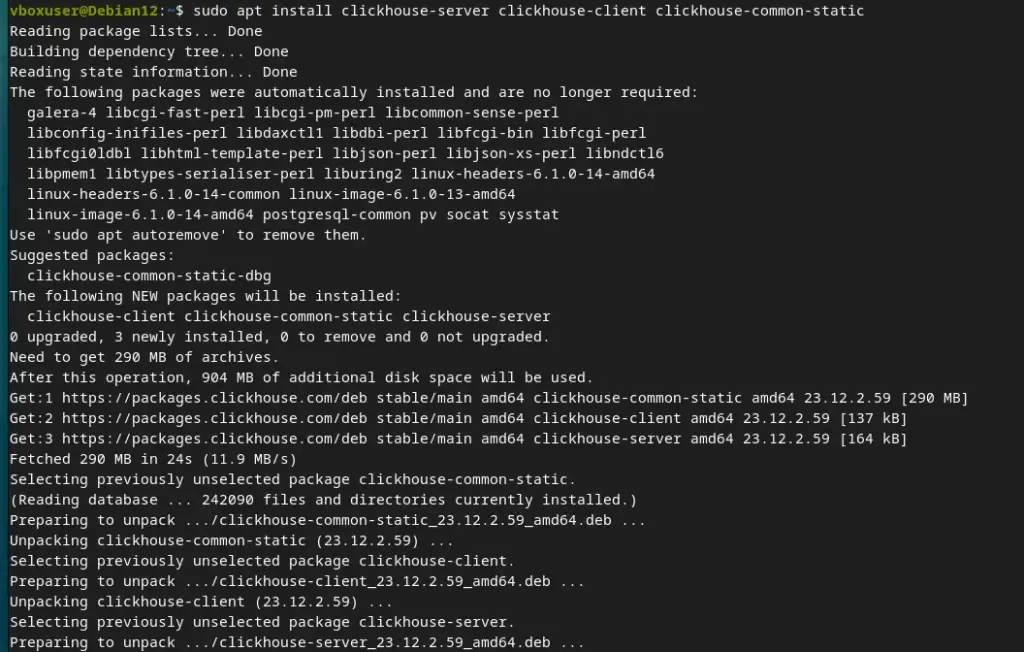
Step 3: Installing ClickHouse on Debian 11 or 12
Now, we can install the latest version of ClickHouse on our Debian operating system using the APT package manager. Here is the command to get it.
Install ClickHouse server, client, and common files:
sudo apt install clickhouse-server clickhouse-client clickhouse-common-static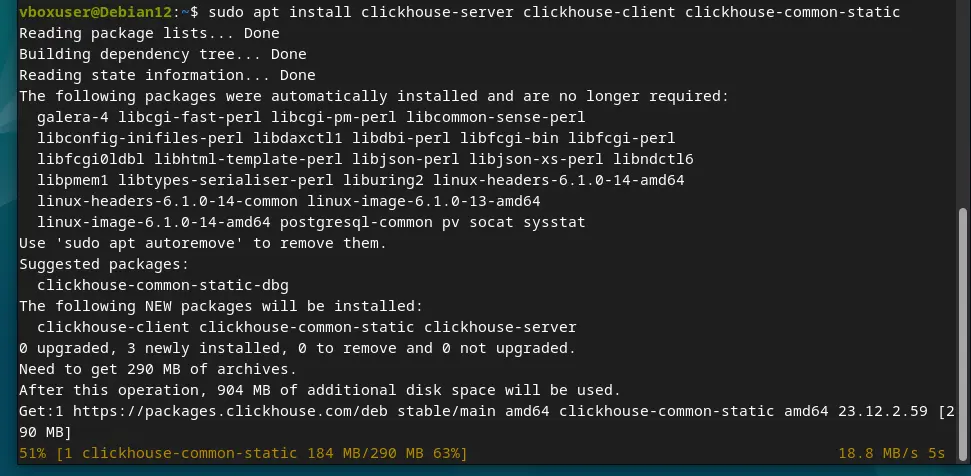
Step 4: Start and Enable ClickHouse Service
Once the installation is completed, let’s start the ClickHouse service and also enable it to make sure it starts automatically with system boot or in case of a service crash.
Start ClickHouse service:
sudo systemctl start clickhouse-serverEnable the service to start on boot:
sudo systemctl enable clickhouse-serverCheck the service status:
sudo systemctl start clickhouse-server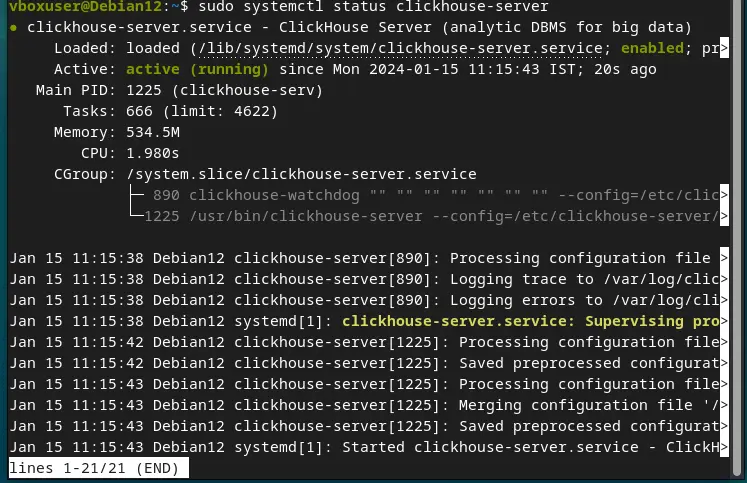
Step 5: Verify Installation
To verify the ClickHouse is working let’s connect to its client which by default uses localhost.
clickhouse-clientYou should now be connected to the ClickHouse interactive shell.
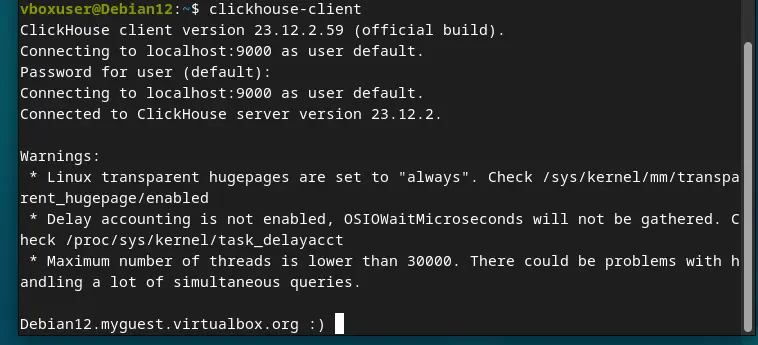
Step 6. Create a database and table
After logging into the server using the client, let’s have an example on- how to create a database and table in the ClickHouse Database server.
Create Database:
CREATE DATABASE IF NOT EXISTS myfirstdbTo create a Table.
Let’s say you want to create a Table name – myfirsttable in Database myfirstdb, the command will be:
CREATE TABLE myfirstdb.myfirsttable
(
user_id UInt32,
message String,
timestamp DateTime,
metric Float32
)
ENGINE = MergeTree()
PRIMARY KEY (user_id, timestamp)The above command will create a MergeTree table with four columns:
user_id: it is used to assign a 32-bit unsigned integer
message: a String data type, which replaces types like VARCHAR, BLOB, CLOB, and others from other database systems
timestamp: a DateTime value to represent time
metric: a 32-bit floating point number
Let’s Insert some data into our created Table:
INSERT INTO myfirstdb.myfirsttable (user_id, message, timestamp, metric) VALUES
(101, 'Hello, MyFirst Database!', now(), -1.0 ),
(102, 'Yesterday the database was not here', yesterday(), 1.41421 ),
(102, 'I have installed it today', today(), 2.718 ),
(101, 'smallest chunks of data read', now() + 5, 3.14159 )To see if the data has been inserted into the table successfully or not.
SELECT * FROM myfirstdb.myfirsttableUninstall ClikHouse from Debian 12 or 11 (optional)
Run the given command to completely remove the Database system from your Debian system along with all its data.
sudo apt autoremove --purge clickhouse-server clickhouse-clientConclusion
You have successfully installed ClickHouse on Debian. This setup enables you to manage large volumes of data efficiently. To know more about this Database system, follow the official documentation.
